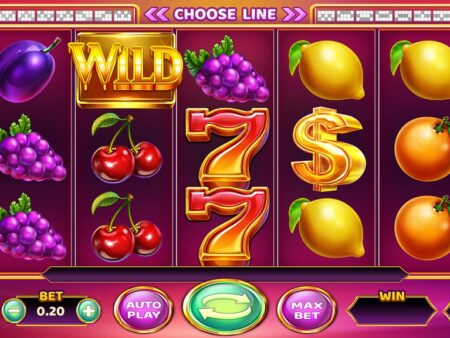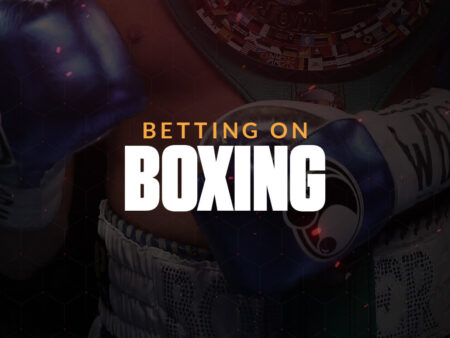Understand the house edge in casino games to help you make informed bets and potentially boost your chances at the gaming tables.
House Edge in Casino Games Explained
Contents
House Edge in Casino
When venturing into the vibrant world of casino games, understanding house edge becomes essential for every player aiming to maximize their chances of success. The house edge in casino represents more than just a number; it’s the embodiment of the casino’s advantage over players – a silent partner in every bet made on the gaming floor or digital interface. This advantage is an inescapable component of the gaming experience, sculpting the financial landscape of both brick-and-mortar and online casinos.
As players navigate through the vast array of casino games, they encounter different house edges, each game presenting its unique set of odds and payback structures. This nuanced metric varies significantly among popular games such as slots, roulette, blackjack, baccarat, and craps. By diving deeper into the house edge, players can sharpen their gaming strategies, align their choices to their financial goals, and cultivate a more nuanced approach to casino entertainment.
Understanding House Edge in Casino Games
When unraveling the concept of house edge, it is essential to address the question: what is house edge? In the simplest terms, it is the casino’s mathematical advantage in games, crafted to ensure the establishment’s profitability over the long term. Understanding what does house edge mean in practical terms is key for any casino player looking to make informed betting decisions. To put it into perspective, the house edge is the average gross profit percentage a casino expects over time from each game offered to players.
Regarding calculating casino house edge, it requires acknowledging that this percentage is not a one-size-fits-all figure. Instead, it is subject to variation, depending on the game being played, the rules set by the casino, and the particular bets chosen by the player. Take blackjack, for instance, with a potential house edge as low as 0.5%, it stands as one of the most player-friendly games available, whereas the house edge in Keno can soar up to a staggering 40%, suggesting a far less favorable bet.
- Games like blackjack, under classic rules, may feature house edges at the lower end of the spectrum.
- On the other hand, games of chance such as Keno or certain slot machines might have significantly higher house edges.
- The player’s own skill and game strategy also play a crucial role in determining the effective house edge they are up against.
To illustrate further, consider the following chart that compares the house edges of popular casino games under typical playing conditions:
| Game | House Edge |
|---|---|
| Blackjack (Classic Rules) | 0.5% |
| Craps (Pass/Come Bet) | 1.41% |
| Roulette (Single Zero) | 2.7% |
| Slots (Average Range) | 2% – 15% |
| Keno | Up to 40% |
Understanding these percentages is paramount, especially when players seek to enhance their chances of winning. A lower house edge suggests a potentially higher payback for players, reinforcing the significance of familiarizing oneself with these critical statistical insights for a strategic gaming experience.
Calculating the Casino Advantage
Grasping the concept of house edge calculation is pivotal for any casino enthusiast looking to sharpen their gaming strategy. Understanding this mathematical component sheds light on the casino’s built-in profit margin, also known as the casino advantage. Primarily, to learn how to calculate casino house edge, one begins with the game’s Return to Player (RTP) percentage—a figure which denotes the theoretical payout to a player over an extended period of play. The RTP is a direct antithesis of the house edge, providing a clear insight into the expected performance from a player’s perspective.
To derive the house edge from RTP, a simple yet effective algebraic subtraction from 100% is performed. Let’s illustrate with a concrete example: suppose a slot game boasts an RTP of 97.3%, the house edge calculation would be:
- 100% (Total possible RTP) – 97.3% (Game’s RTP) = 2.7% House Edge
Such a calculation unveils the advantage that the casino holds over the player. The lower the house edge, the more favorable the game is to the player in the long term. Conversely, a higher house edge indicates a steeper uphill battle against potential losses over time. When players select games with an RTP of 98% or 99%, they’re effectively encountering some of the most generous conditions the house can offer, with a minimal house edge of 2% or even 1% respectively.
Revealing these percentages is not just about choosing games wisely; it’s about optimizing the gaming experience to enhance enjoyment alongside prospects for more substantial Return to Player percentages. Below is a comparative chart that exemplifies varying RTPs and their consequential house edges:
| Game Type | RTP (%) | House Edge (%) |
|---|---|---|
| High RTP Slots | 99.0 | 1.0 |
| Blackjack (optimal strategy) | 99.5 | 0.5 |
| American Roulette | 94.7 | 5.3 |
| Keno | 75.0 | 25.0 |
Mindful application of these principles in your gaming strategy can steer your casino encounters toward a more fruitful engagement. Remember that while the house edge can never be eliminated, being informed means being empowered to maneuver through the casino landscape with an analytical edge of your own.
What Does House Edge Mean for Players
Understanding the difference between house edge and RTP is paramount for casino enthusiasts looking to refine their gaming strategy. Whether you’re sitting at a blackjack table, spinning the roulette wheel, or throwing dice in craps, each game’s house edge influences the expected performance over time. Games like video poker and baccarat, which traditionally have a lower house edge, tend to offer better odds for players, meaning that over an extended period, players might see a more favorable return.
Conversely, games such as slots, keno, and even variants of roulette like the American version, come with a higher house edge, suggesting a lower probability of winning against the casino. For players who enjoy a game of backgammon, which involves both skill and luck, the house edge can be influenced by player expertise. Ultimately, while no strategy can completely eliminate the house edge, players can educate themselves and choose games judiciously to improve their overall gaming experience.
- Blackjack: Known for its strategic depth and low house edge when basic strategy is applied.
- Roulette: Offers varying house edges with European version being more favorable than American.
- Craps: Provides opportunities to place strategic bets that can lower the effective house edge faced.
- Video Poker: One of the few games where player skill can significantly reduce the house advantage.
- Baccarat: Popular for its simplicity and low house edge on banker bets.
- Slots: Highly variable house edges, dependent on the specific machine and casino setting.
- Keno: Generally known for having one of the highest house edges in the casino.
- Backgammon: As a game of skill, the house edge can be influenced by player’s decisions and expertise.
When choosing a game to play, consider these differences and pick according to your preference for stakes, game speed, and the balance between skill and chance. The goal isn’t to defeat the house edge—a feat not feasible in the long run—but to understand it and play the games that align best with your individual preferences and goals.
Games with the Best and Worst House Edge
In the realm of casino gaming, players must navigate through various games each with a distinct house edge percentage. A prime example is blackjack, positioned as the game that frequently claims the title for what casino game has the lowest house edge. With optimal play and traditional rules, the house edge in blackjack can dip as low as 0.5%, significantly enhancing player profitability over the long term. Baccarat trails closely, especially for wagers on the banker’s hand, offering a house edge that stands on the lower side of the spectrum. These games attract seasoned players who seek the finest balance between entertainment and favorable odds.
Contrastingly, some casino games are renowned for their steep house edge percentages. Slot machines are a typical highlight, commanding a broad range from 2% to a hefty 15% in casino house edge, representing a spectrum of volatility and player return prospects. Thus, discerning the house edge percentage of each slot game is critical as it directly relates to its corresponding Return to Player (RTP) value. Within the diverse array of casino entertainment, games like keno and certain bets in roulette showcase higher edges, hinting that these games are costlier entertainment over time.
Conclusion
The savvy gambler always has an eye on the casino game house edge. Whether it’s the spin of the roulette wheel, the roll of the craps dice, or the turn of a card in baccarat or blackjack, understanding the inherent advantage can make a profound difference. Knowledge of the house edge percentage provides invaluable insight, allowing players to tailor their strategies and choose where to place their bets wisely. In a landscape where the house always has an edge, arming oneself with this knowledge is not just a gamble—it’s a strategy for success.
- Super Heinz Betting Explained - April 22, 2024
- Betting Strategies: Heinz Bet Explained - April 18, 2024
- What is a Yankee Bet and How Does it Work - April 17, 2024




